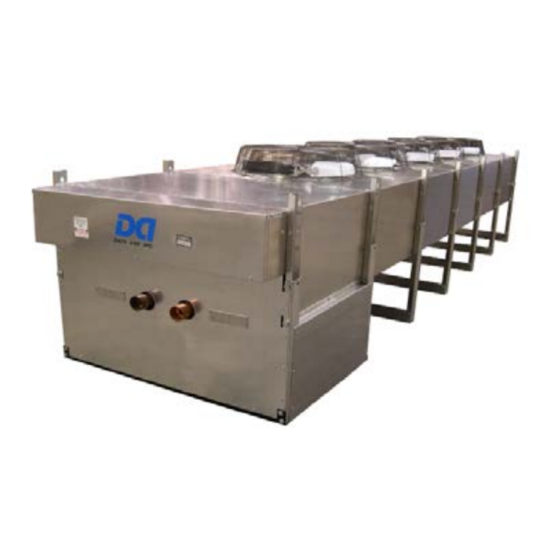Data Aire DAFC Руководство и инструкция по эксплуатации - Страница 13
Просмотреть онлайн или скачать pdf Руководство и инструкция по эксплуатации для Аксессуары Data Aire DAFC. Data Aire DAFC 20 страниц. Fluid coolers

Fan Motor Controls
Fluid cooler fan motors are cycled on and off by individual water-sensing thermostats
strapped to the leaving water header. The first fan motor will only have a thermostat if the
unit has an energy saver coil. Without the optional energy saver coil, the first fan motor runs
whenever there is a call for cooling via an auxiliary signal sent by the indoor evaporator.
The water-sensing thermostats have adjustable setpoints which are typically staggered
to maintain water temperature in the 85° to 105° F range. This is generally the desired range
for glycol cooled systems. These set points are factory set but may require field adjustment
based on local conditions and application.
Energy Saver Cooling
In colder climates, the evaporator will often be equipped with an additional free cooling
coil to take advantage of the colder ambient temperatures. When incoming fluid falls below
the setpoint of a water-sensing thermostat in the evaporator (typically about 50° F), energy
saver cooling becomes available.
Systems with an energy saver coil should have at least one fluid-sensing thermostat on
the fluid cooler set lower to take advantage of colder ambient temperatures. The desired fluid
temperature for energy saver cooling is 45° F. Field adjustment of fluid-sensing thermostats
is not unusual.
It is desirable to use the energy saver mode as much as possible. However, fluid
temperature that is too cold can cause excessive dehumidification and coil sweating. Fluid
temperature that is too high can cause the indoor space temperature to rise. This can cause
the indoor microprocessor controls to lock out the energy saver mode for one hour while it
reverts back to compressorized cooling. Adjust the setpoints of the thermostats to allow the
maximum free cooling time. Overcooling or undercooling the fluid should be avoided.
Every application will have a different ambient temperature and indoor heat load/air
distribution profile. Therefore it is not possible to dictate the exact water-sensing thermostat
setpoints. Field adjustments are typical to allow fine-tuning to specific conditions.
13
